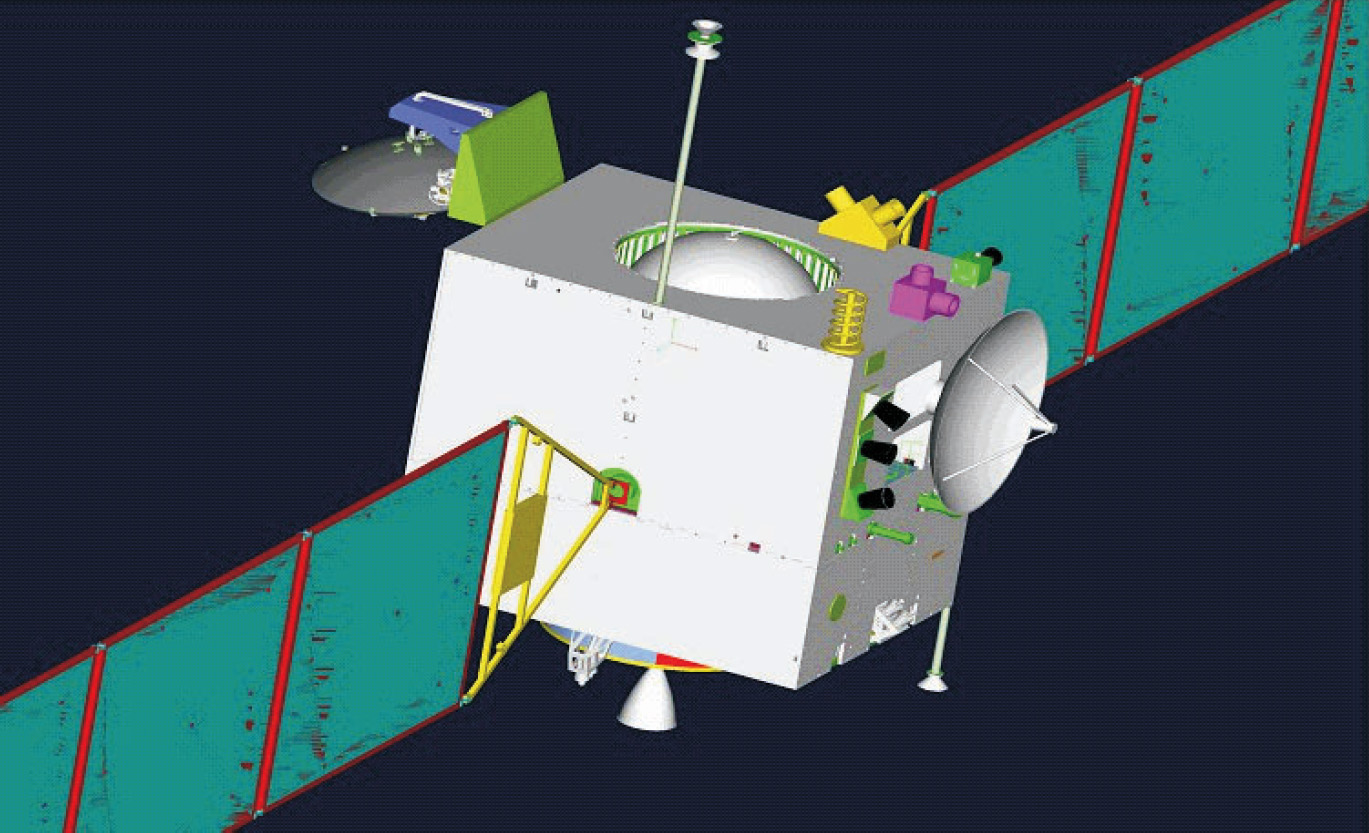 Full resolution (1,369 × 833 pixels, file size: 312 KB, MIME type: image/jpeg)
Full resolution (1,369 × 833 pixels, file size: 312 KB, MIME type: image/jpeg)
Chang'e 3 is a lunar exploration mission operated by China National Space Administration, incorporating a robotic lander and a rover. Chang'e 3 was successfully launched on 1 December 2013 as part of the second phase of the Chinese Lunar Exploration Program.[4][7][8] It will be China's first lunar rover, and the first spacecraft in 37 years to make a soft landing on the Moon, since the Soviet Luna 24 mission in 1976.[9] It is named after Chang'e, the goddess of the Moon in Chinese mythology, and is a follow-up to the Chang'e 1 and Chang'e 2 lunar orbiters. The lunar probe is also called the Yutu, or Jade Rabbit, a name selected in an online poll that comes from a Chinese myth about a white rabbit that lives on the Moon.[10]
Wikipedia.Las estaciones de seguimiento de la ESA ayudarán a la misión lunar china
29 noviembre 2013
La red de estaciones de seguimiento de la ESA entrará en acción poco después del lanzamiento de la misión chinaChang’E-3, proporcionando un apoyo crucial durante su viaje de cinco días hacia la Luna.
La misiónChang’E-3, bautizada con el nombre de la diosa de la Luna en la mitología china, despegará el próximo día 1 de diciembre desde la base de lanzamiento Xichang LC-2, en la provincia china de Sichuan, y está formada por una plataforma estacionaria y por un vehículo de exploración lunar de seis ruedas.
La misión aterrizará en la Bahía del Arco Iris (Sinus Iridum) el día 14 de diciembre, en el primer alunizaje suave desde la misión rusa Luna 24, en 1976.
La ESA aportará su experiencia en seguimiento
Instantes después del despegue, la antena de 15 metros de la ESA en Kourou, Guayana Francesa, empezará a prestar apoyo de telecomunicaciones, recibiendo las señales de la misión y enviando comandos en coordinación con el centro de control de la misión en China.
La ESA seguirá la misión durante todo el viaje a la Luna. Durante la fase de descenso y después del aterrizaje, utilizará sus estaciones de espacio profundo para proporcionar servicios de localización ultra-precisos.
El apoyo europeo a la misión se coordinará desde el Centro de Control de Estrack, en el Centro Europeo de Operaciones Espaciales de la ESA (ESOC) en Darmstadt, Alemania.
“Estamos orgullosos de que la experiencia de nuestros equipos de dinámica del vuelo y de estaciones de seguimiento, y la sofisticada tecnología de nuestra red global Estrack, puedan ayudar a China a llevar a la Luna una misión de gran relevancia científica”, comenta Thomas Reiter, Director de Vuelos Tripulados y Operaciones de la ESA.
“Una cooperación internacional como ésta es fundamental para las futuras misiones de exploración, tripuladas o robóticas, de los planetas, lunas y asteroides, para el beneficio de todos”.
Siguiendo el progreso de la misión lunar
El lanzamiento deChang’E-3 está programado para el día 1 de diciembre a las 18:00 UTC. La estación de seguimiento de Kourou recibirá sus primeras señales alrededor de las 18:44 UTC.
Kourou seguirá a la nave hasta que entre en órbita lunar el día 6 de diciembre, y durante su descenso a la superficie de la Luna, previsto para el mediodía del día 14, en coordinación con las estaciones de seguimiento chinas.
El alunizaje y las operaciones en superficie se controlarán desde dos estaciones chinas: Kashi y Jiamusi.
“En cuanto la nave se encuentre sobre la superficie lunar, utilizaremos nuestras antenas de espacio profundo de 35 metros de diámetro en Cebreros, España, y Nueva Norcia, Australia, para determinar su posición utilizando la técnica ‘delta-DOR’, explica Erik Soerensen, responsable del apoyo de seguimiento a misiones externas en el ESOC.
“La técnica ‘delta-DOR’ permite determinar la posición de la nave con una precisión extrema, lo que ayudará a nuestros compañeros chinos a evaluar con precisión el lugar del alunizaje”.
Las estaciones de Cebreros y Nueva Norcia seguirán el alunizaje en directo
Las estaciones de Cebreros y Nueva Norcia grabarán las señales enviadas porChang’E-3 durante la fase de alunizaje, ayudando a la agencia espacial china a reconstruir y analizar la trayectoria de la nave.
Un equipo de ingenieros chinos se desplazará a Darmstadt para ayudar con las tareas de apoyo a esta misión.
“Las dos agencias estamos utilizando unos estándares técnicos internacionales que hacen posible que nuestras estaciones y el ESOC se puedan comunicar con las naves y sistemas de tierra chinos”, aclara Soerensen.
“Aunque aquí en el ESOC seamos un equipo muy internacional, muy pocos hablan mandarín, por lo que la presencia de nuestros compañeros chinos será de gran utilidad si surge cualquier imprevisto"
Chang’e 3: The Chinese Rover Mission
Currently scheduled for launch in December 2013 from the Xichang Satellite Launch Center in Sichuan province, the Chang’e 3 mission aims to
land a Chinese rover on the Moon. If the mission is successful, it will be the
first soft landing on the Moon since the Russian Luna 24 mission in 1976.
Overseen by the China National Space Administration, the Chang’e program is
following a step-wise approach to lunar exploration that could lead to the first
taikonaut stepping onto the Moon by 2025.
The previous Chang’e 1 and 2 lunar orbiting missions, launched in 2007 and
2010, represented the first phase of the Chang’e program. Chang’e 3, to be
followed by Chang’e 4, represent the second phase of the program, both involving
rovers. The third phase, with Chang’e 5, will be a sample-return mission and is
currently scheduled for 2017. After that, it is anticipated that a new program
will commence, which might culminate in a manned landing.
Chang’e is the name of a Chinese goddess who ascended to the Moon after
consuming an immortality pill and there befriended a jade rabbit who was already
a lunar resident. The elements of this legend were relayed by NASA to the Apollo
11 crew ahead of the first Moon landing in 1969. Michael Collins famously
responded “Okay. We’ll keep a close eye out for the bunny girl.”
The Chang’e 3 lander will set down in Sinus Iridum, which is an
extension of Mare Ibrium
and roughly opposite the Apollo 15 landing site near Hadley Rille.
After landing, a solar-powered rover will roll off the lander and commence
its mission, which is expected to last for at least three months, although
presumably that will include a lot of down-time while the two-week-long lunar
nights prevail.
The Chang’e 3 lander itself will continue to operate as a stationary science
platform. It will be powered by a radioisotope thermoelectric generator and
hence will be largely unaffected by the presence or absence of direct sunlight.
The lander will operate a number of science instruments, including an optical
telescope and a “soil probe” to conduct analyses of lunar regolith.
The Chang’e 3 rover will have a mass of 120 kilograms, including a 20 kg
science payload. It is reported that it will explore widely over an area within
a 5 kilometer radius of the lander. This sounds a little ambitious considering
that the Spirit and Opportunity rovers traveled just 2 to 3 kilometers over
their first year of operation, but the Chang’e 3 rover will have more advanced
technology and more solar energy to draw upon.
The rover will also have autonomous hazard avoidance and navigation capacity,
but with a radio delay of only 1.3 seconds from Earth, it will be mostly under
the direct control of an Earth-based driver.
The rover’s science payload will include an alpha particle X-ray spectrometer, which has been standard
issue on all the NASA Mars rovers to date, to enable geochemical analyses. The
rover will also have a radar device on its underside, to investigate the
structure and depth of the lunar regolith as well as the underlying structure of
the lunar crust.
AmericaSpace.
ayabaca@gmail.com
ayabaca@hotmail.com
ayabaca@yahoo.com
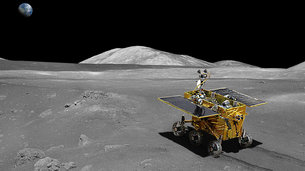


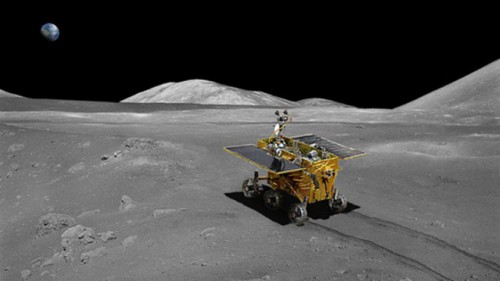
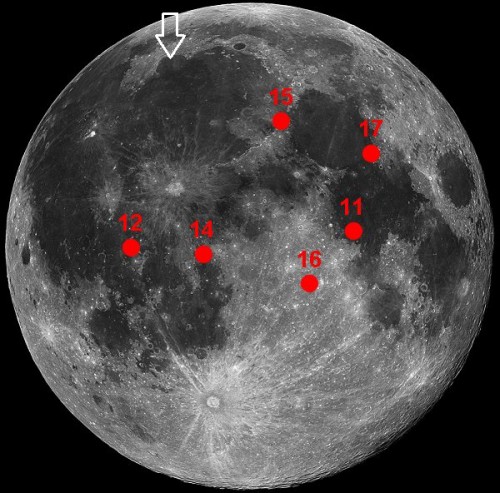
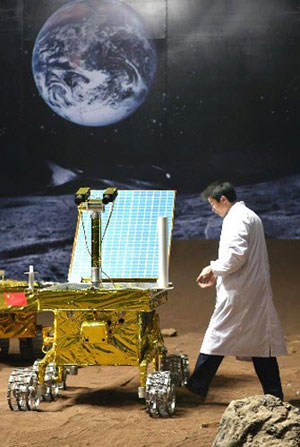
No hay comentarios:
Publicar un comentario